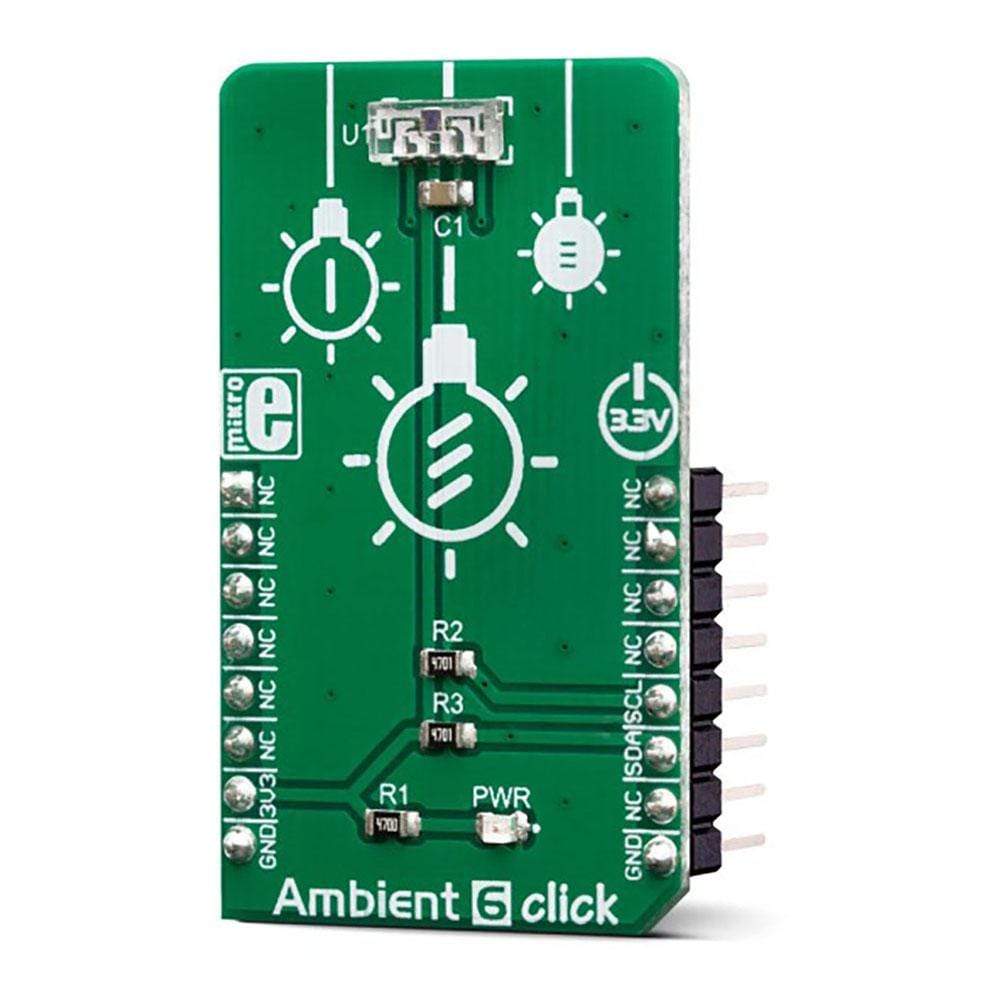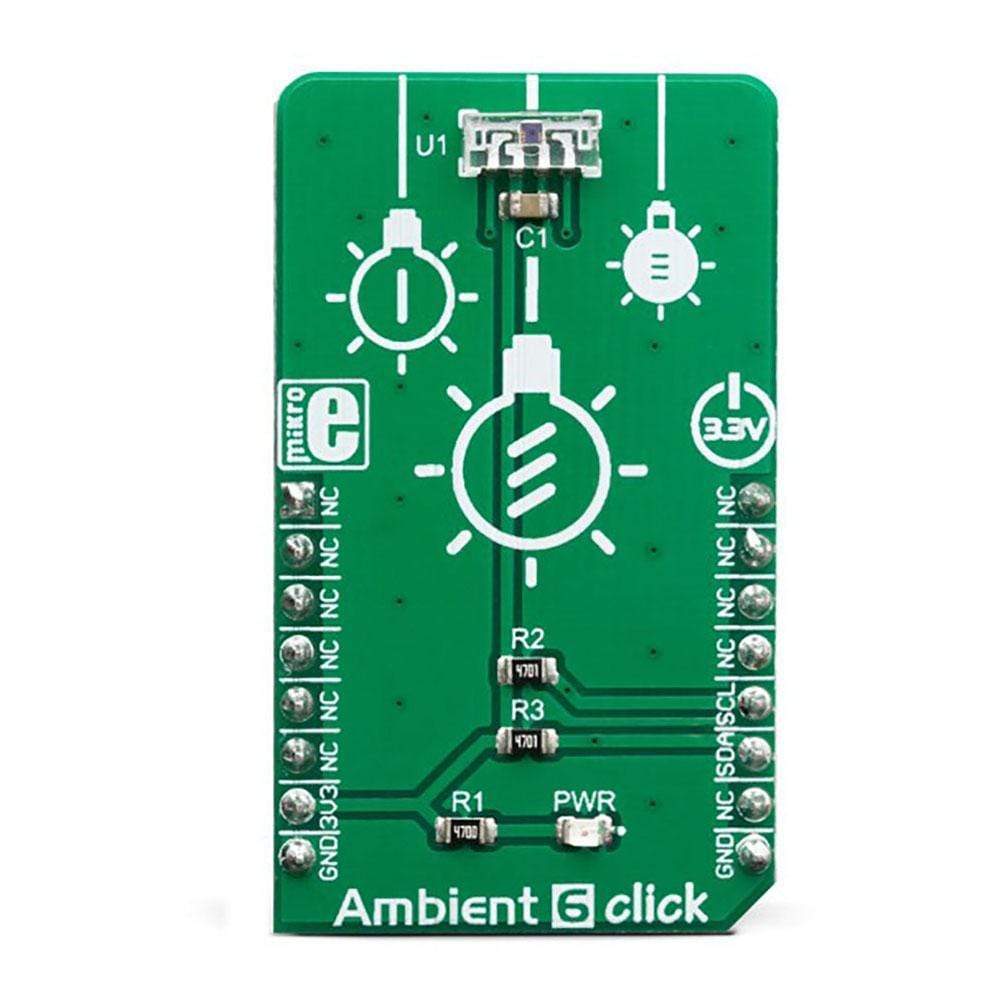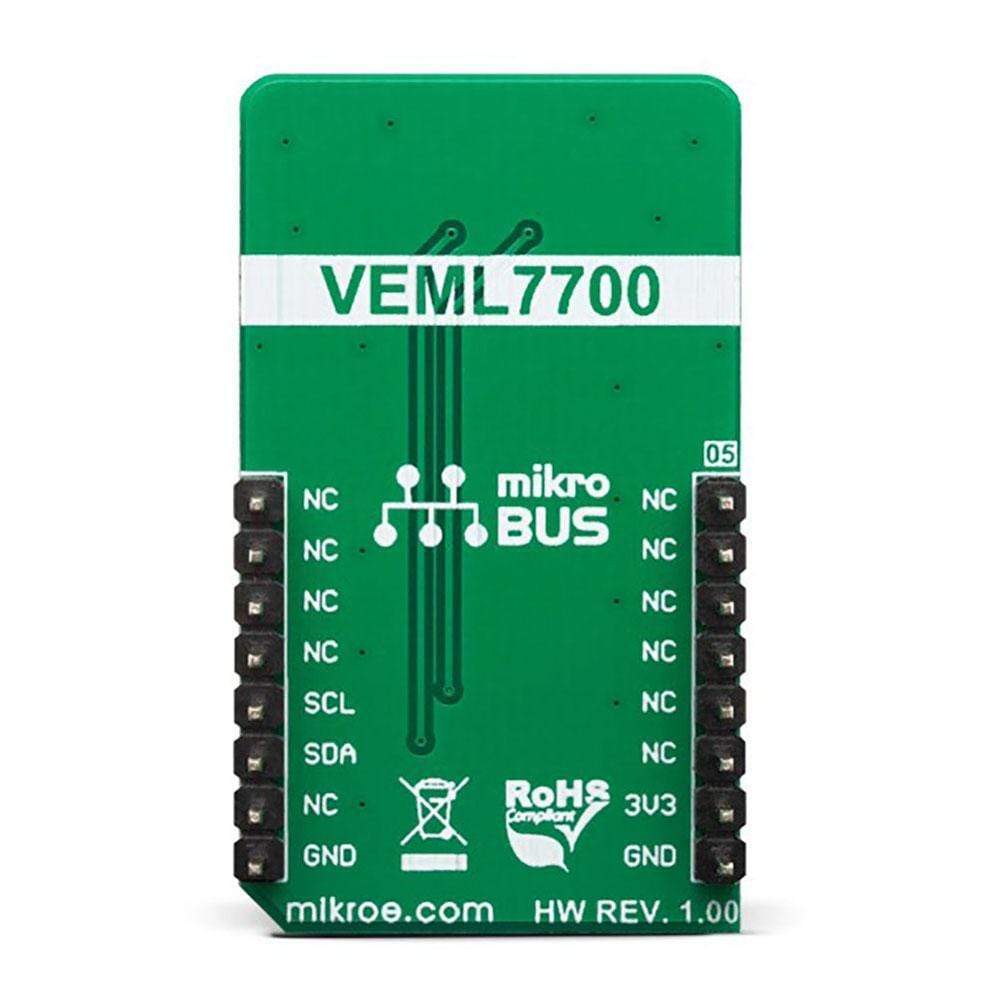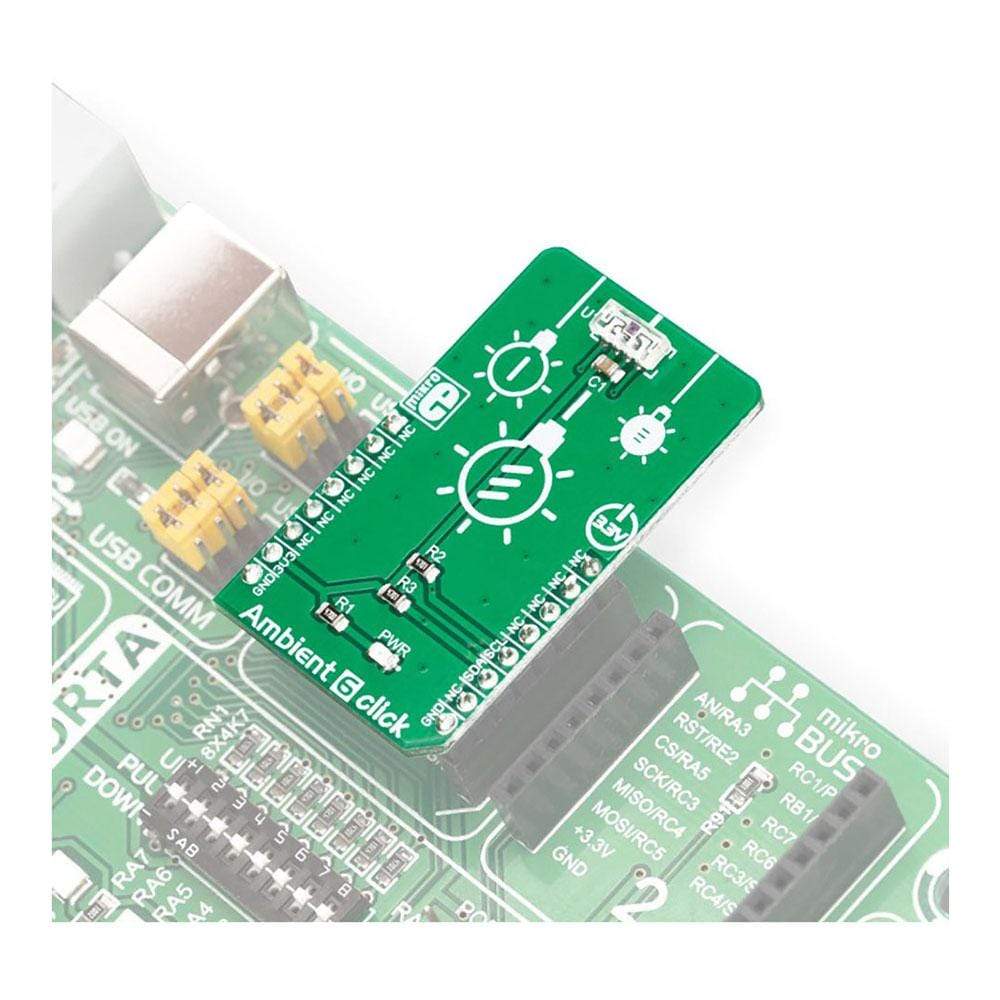



Overview
The Ambient 6 Click Board™ can sense the intensity of the ambient light, providing the measurement data in digital format over the I2C interface. It utilises the VEML7700, a miniature ambient light sensor (ALS) with an I2C interface. Packed in a small transparent casing, this sensor can provide very accurate readings: thanks to a 16-bit dynamic range, it can be used in very dim and very bright lighting conditions.
A well-proven Filtron™ technology allows response close to a real human eye, while the O-Trim™ technology allows for ALS tolerance of less than 10%. The flicker noise rejection algorithm further improves accuracy, while excellent thermal compensation ensures consistency of the measurement results.
Downloads
Das Ambient 6 Click Board™ kann die Intensität des Umgebungslichts erfassen und die Messdaten in digitalem Format über die I2C-Schnittstelle bereitstellen. Es verwendet den VEML7700, einen Miniatur-Umgebungslichtsensor (ALS) mit einer I2C-Schnittstelle. Dieser Sensor ist in einem kleinen transparenten Gehäuse untergebracht und kann sehr genaue Messwerte liefern: Dank eines 16-Bit-Dynamikbereichs kann er bei sehr schwachen und sehr hellen Lichtverhältnissen verwendet werden.
Die bewährte Filtron™-Technologie ermöglicht eine Reaktion, die der eines echten menschlichen Auges nahe kommt, während die O-Trim™-Technologie eine ALS-Toleranz von weniger als 10 % ermöglicht. Der Algorithmus zur Unterdrückung von Flimmerrauschen verbessert die Genauigkeit zusätzlich, während eine hervorragende Wärmekompensation die Konsistenz der Messergebnisse gewährleistet.
| General Information | |
|---|---|
Part Number (SKU) |
MIKROE-3444
|
Manufacturer |
|
| Physical and Mechanical | |
Weight |
0.018 kg
|
| Other | |
Country of Origin |
|
HS Code Customs Tariff code
|
|
EAN |
8606018714919
|
Warranty |
|
Frequently Asked Questions
Have a Question?
Be the first to ask a question about this.




